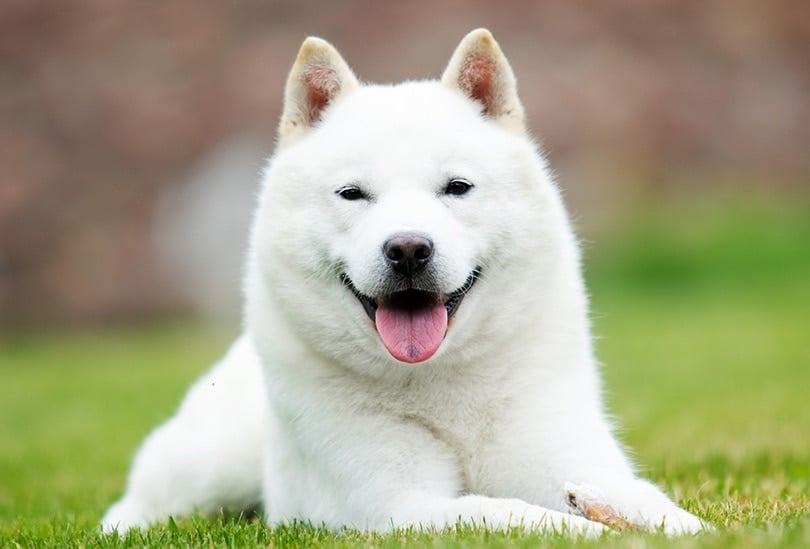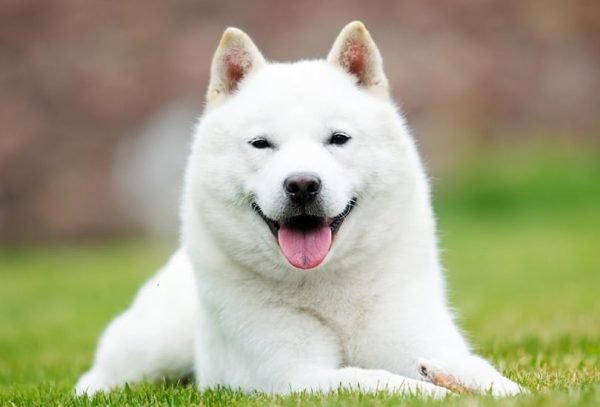The Hokkaido dog is a spirited and devoted dog that hails from Japan. They’re a rare dog breed that almost faced extinction at one point. Fortunately, breeding programs have been created to protect, preserve, and re-establish this breed.
Meeting a Hokkaido is a special treat, and you’ll find that they possess the perfect combination of being charming and dutiful. They’re wonderful companion dogs that are extremely loyal to their families.
Breed Overview
Height:
18 – 20 inches
Weight:
44 – 66 pounds
Lifespan:
12 – 15 years
Colors:
Black, Black and Tan, Brindle, Red, Red Sesame, Sesame, White
Suitable for:
Active families, people who work from home, families with children
Temperament:
Alert, loyal, friendly
Hokkaidos are known to be the oldest breed of the six Japanese spitz breeds. Because they’re so uncommon, they’re often mistaken for Shiba Inus or Akita Inus. However, they’re a separate and distinct breed and possess their own special traits and qualities. They’re praised for their loyalty, intelligence, and strong work ethic, and they also have a playful and docile side to them. Anyone who brings home a Hokkaido is bringing home a friend for life that’s ready for all sorts of adventures.
Hokkaido Dog Breed Characteristics
Hokkaido Breed Puppies
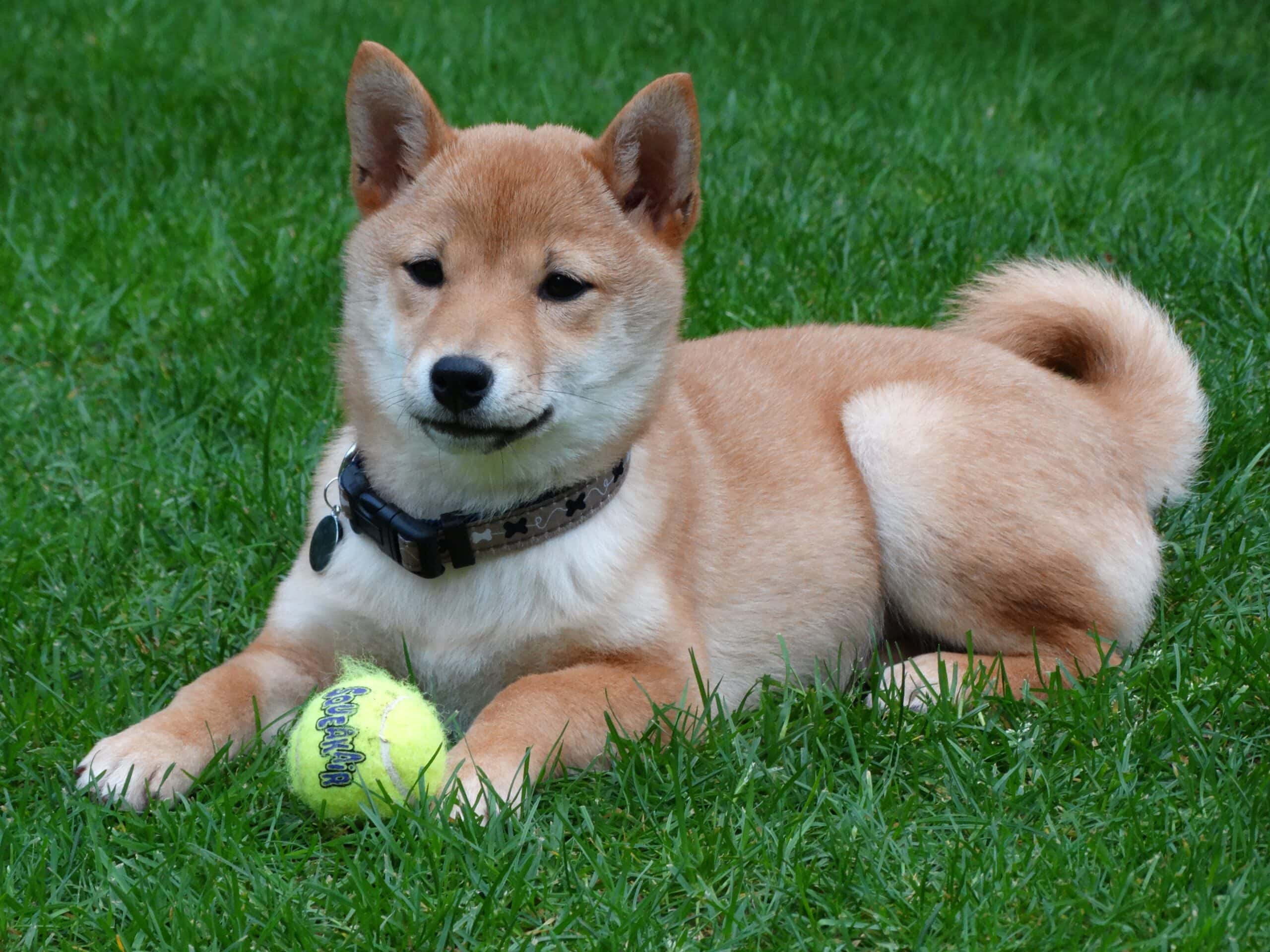
Hokkaidos are one of the more uncommon Japanese dog breeds. They’re quite rare in Japan, and only a few Hokkaido breeders are currently in the US. Hokkaido is currently listed as a purebred dog under the American Kennel Club’s Foundation Stock Service (FSS) Program. Many dog breeds in the FSS Program are being bred to receive formal AKC recognition eventually. Therefore, it can be difficult to find Hokkaido puppies for sale, as this breed is still being developed in the US.
Since there aren’t very many Hokkaido breeders, waitlists for new puppies tend to be pretty long. So, if you’re set on taking care of a Hokkaido, it’s best to get your name on a waitlist as soon as possible.
If you’re fortunate enough to find a Hokkaido puppy, you’ll notice immediately that they’re a bundle of energy. Hokkaido puppies are very playful and active, and they’ll love having a designated space where they can let loose and run around. They’ll also benefit from going to puppy play classes where they can socialize with other puppies under the supervision of a dog trainer or behaviorist. Early socialization in safe environments will help Hokkaido puppies get used to and learn to behave appropriately with other dogs.

Temperament & Intelligence of the Hokkaido
Hokkaidos are known for their intelligence, activeness, and loyalty. Hokkaidos make wonderful family dogs, but they usually form one strong bond with their primary caretaker in the family. Because Hokkaidos love being around their families so much, they don’t do well when they’re left home alone for too long. They’re companion dogs at heart and are known to be like shadows that follow their favorite people everywhere they go.
Hokkaidos are intelligent and versatile dogs. They were originally bred to be hunting dogs and would accompany their owners on hunting trips in cold climates with rough terrain. They’re fast learners, and their devotion to their owners makes them extremely dependable. They like making people happy and receiving affection in return.
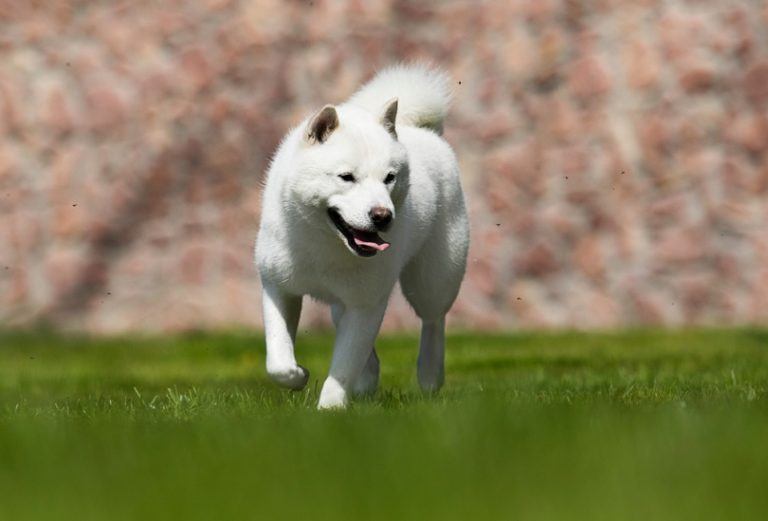
Are These Dogs Good for Families? 🏡
Hokkaidos are good family dogs, but they’re often better with older children. They’re affectionate and playful, but their energy may be too overwhelming for younger children. Younger children can also easily get knocked over by a Hokkaido if they’re not paying close attention.
If you have younger children in your family, it’s important to supervise all interactions until both the dog and child understand how to behave around each other respectfully. Hokkaidos must learn to be gentler around children, while children must learn how to pet Hokkaidos and when they should be left alone.
Does This Breed Get Along With Other Pets? 🐶 😽
Hokkaidos are perfectly content being the only dog in a family, as they prefer human companionship over anything else. However, they’re still friendly dogs and can live harmoniously with other dogs in the home. A gentle and incremental introduction between a Hokkaido and another dog will greatly increase the chances of them getting along.
Because Hokkaidos were bred to be hunting dogs, they may not be fully trusted with other types of pets. A Hokkaido may be able to get used to living with a cat if there’s enough space in the house. However, their prey drive may take over when they see small mammals, birds, and other types of small pets.
Things to Know When Owning a Hokkaido
Food & Diet Requirements 🦴
Most Hokkaidos will do well with eating high-quality dog food. It’s best to have your Hokkaido examined by your veterinarian to determine appropriate portion sizes. Your veterinarian can also assess if your Hokkaido’s nutritional needs are being met and recommend any special diets if necessary.
Since Hokkaidos are active dogs, they may benefit from eating a high-protein diet to sustain their energy needs. Hokkaidos are also more susceptible to developing eye issues, so it’s best to consult your veterinarian to determine if it’s appropriate for your Hokkaido to take supplements that support eye and vision health.
Exercise 🐕
Hokkaidos are active dogs that require at least an hour of exercise per day, and leisurely walks around the park won’t cut it. Hokkaidos need space to run, so it’s important to have a fully fenced yard for them to play in or to take them to a dog park daily.
Hokkaidos will also enjoy going on hikes, and some will also like to swim. Since they excel in obedience training, they’re usually quick to pick up on dog sports and enjoy racing and agility courses.
A Hokkaido’s exercise regimen must also include plenty of mental exercise and stimulation. Hokkaidos tend to get bored easily and will turn to destructive behaviors if they don’t have something to do. They’ll enjoy figuring out dog treat puzzles and engaging in other enrichment activities. They’re also excellent working dogs and will appreciate having a job or task assigned to them.
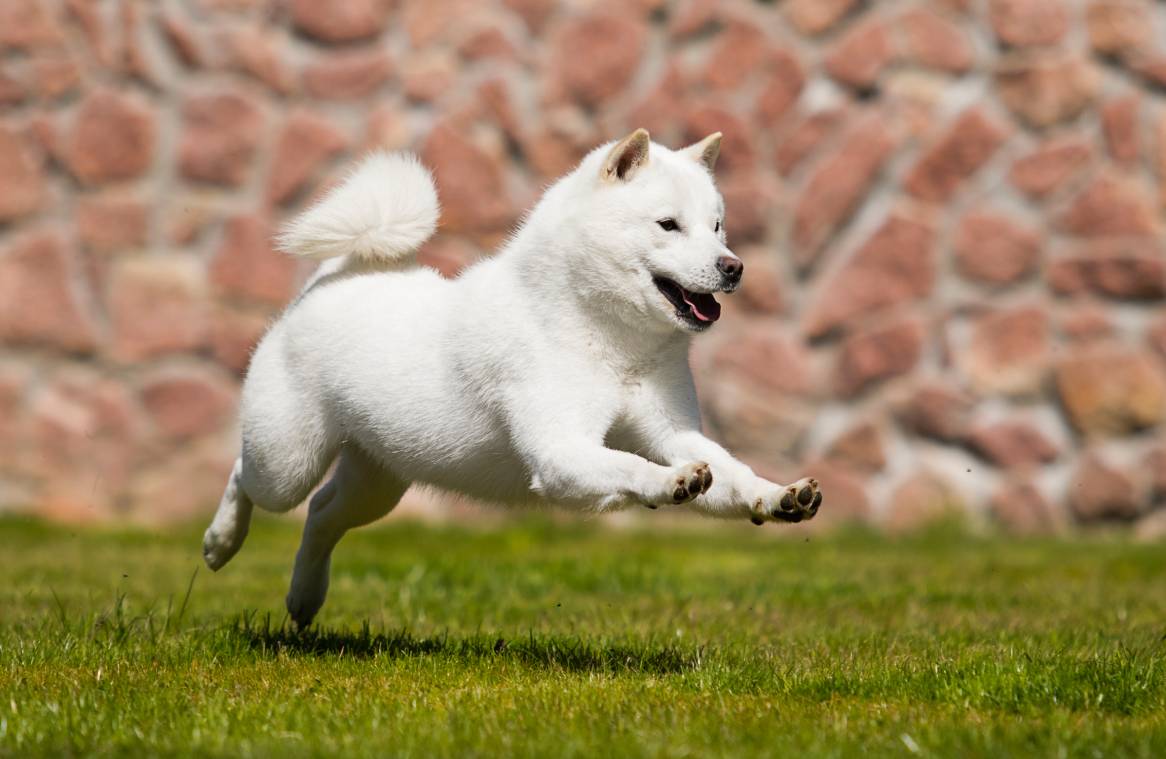
Training 🦮
Hokkaidos are also fairly easy to train due to their intelligence and eagerness to please. They’re known to be quite obedient and are quick to pick up on obedience training. However, they can have a short attention span because they often just want to run around and play. Exercising a Hokkaido before a training session can help them to stay focused for longer. Hokkaidos also tend to learn faster when training sessions are kept short and fun, and they respond very well to praise and other positive rewards.
Grooming ✂️
Hokkaidos have fairly easy grooming needs. They don’t require any trims or haircuts, and shaving down their fur can cause coat damage and difficulty regulating body temperature. They shed heavily twice a year when they blow out their undercoat. Brushing them regularly during this time makes shedding around the house more manageable. Hokkaidos also don’t need to be bathed unless they get really dirty or start to smell.
Health and Conditions ❤️
Hokkaidos are generally healthy and hardy, but as with all purebred dogs, they’re predisposed to certain genetic health issues. Vision issues are one of the most common health issues Hokkaidos face as they start to age. So, it’s important to stay on top of annual physical exams and have discussions with your veterinarian regarding a Hokkaido’s eye health.
- Collie eye anomaly
- Hip dysplasia
- Pica
- Heart issues
Male vs Female
There aren’t any consistently distinguishable differences between male and female Hokkaidos other than size. In some cases, male Hokkaidos can grow to become slightly larger than female Hokkaidos. Other parts of their appearance aren’t determined by their sex, and temperament is often more affected by genetics and the environment the dog grows up in.
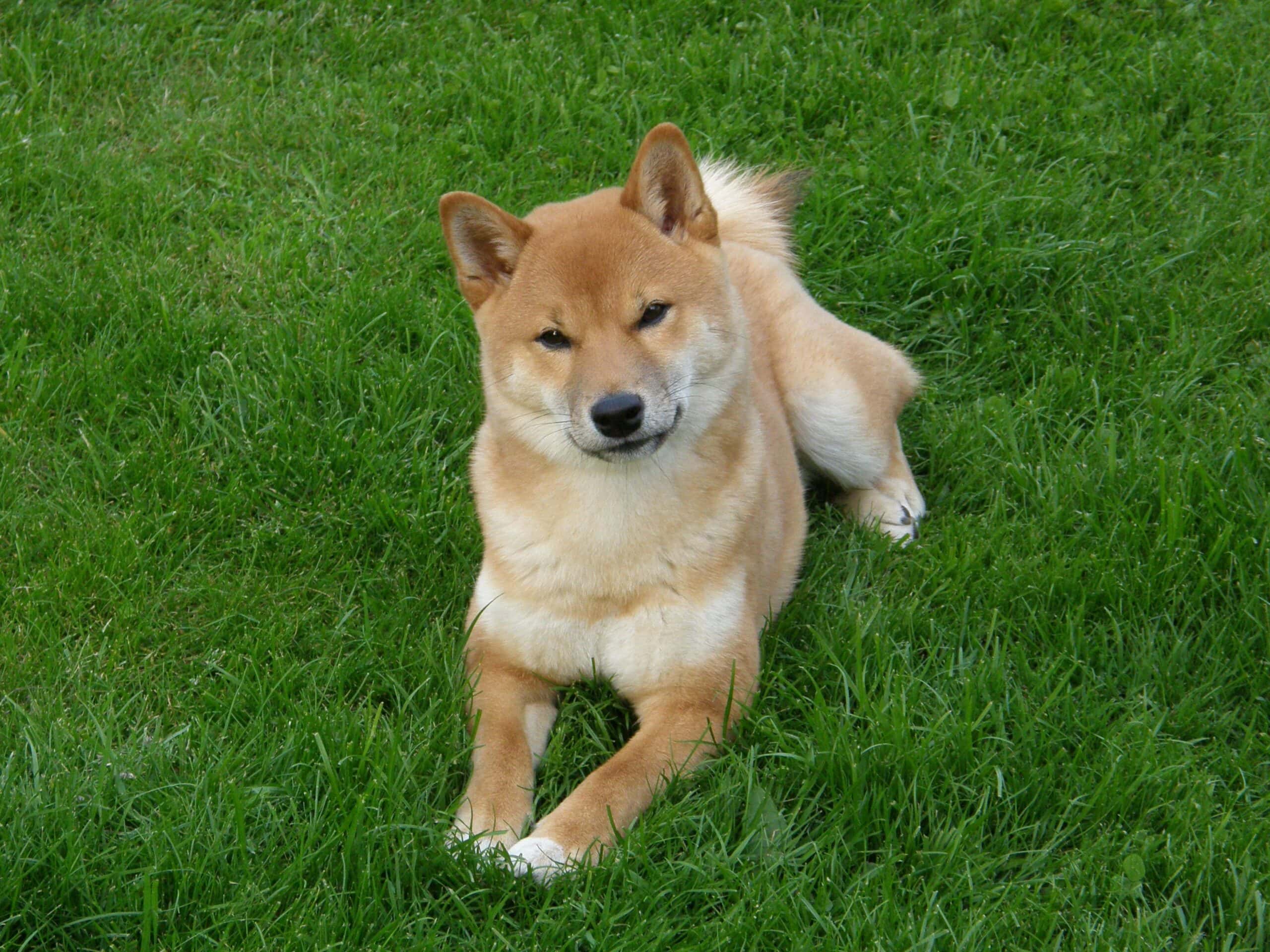

3 Little-Known Facts About the Hokkaido
1. Hokkaidos are one of the oldest Japanese dog breeds.
It’s commonly believed that Hokkaidos are one of the oldest dog breeds native to Japan. Records of them date back to the 1140s, and they lived alongside humans as hunting dogs.
2. Hokkaidos have been used in search and rescue work.
Along with hunting, Hokkaidos are strong candidates for search and rescue work. They’re most notable for their search and rescue mission in 1902. An army expedition was left stranded after a snowstorm, and Hokkaidos helped rescue survivors.
3. Hokkaidos used to be called Ainu Dogs.
Hokkaidos were previously called Ainu Dogs after the Ainu people in Hokkaido. Their name officially changed to Hokkaido in 1937 after they were categorized as a National Protected Species by the Japanese Ministry of Education.

Final Thoughts
Hokkaidos are loyal and intelligent dogs that love being around their favorite people. They’re playful companions, and they also take their responsibilities seriously. Hokkaidos are best suited for people with active lifestyles and the time to invest in consistent obedience training. They’re also happiest in homes where someone is usually around to keep them company.
As of now, Hokkaidos are rare and uncommon. However, breeders are continuing to work to establish the breed, and we hope to see more of these wonderful dogs in the near future.
Featured Image Credit: Happy Monkey, Shutterstock
Contents
- Hokkaido Dog Breed Characteristics
- Hokkaido Breed Puppies
- Temperament & Intelligence of the Hokkaido
- Things to Know When Owning a Hokkaido
- 3 Little-Known Facts About the Hokkaido
- 1. Hokkaidos are one of the oldest Japanese dog breeds.
- 2. Hokkaidos have been used in search and rescue work.
- 3. Hokkaidos used to be called Ainu Dogs.
- Final Thoughts

